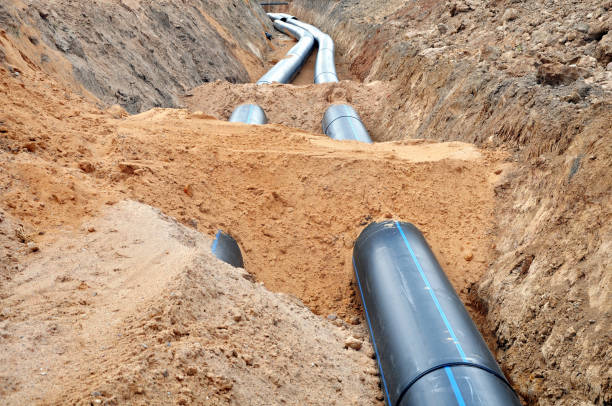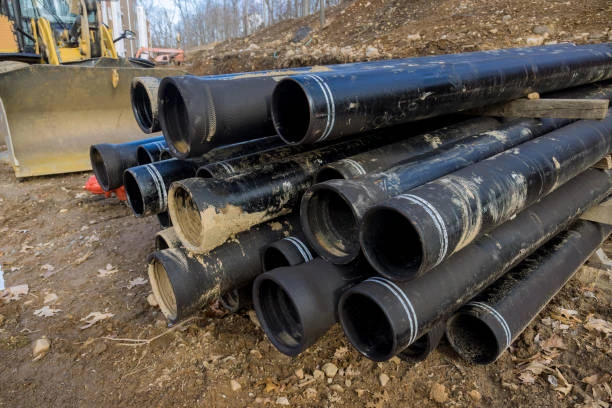The global demand for HDPE pipes continues to rise, as industries across construction, agriculture, water management, and gas distribution shift towards more durable and sustainable piping solutions. High-density polyethylene (HDPE) has proven itself as a superior material for modern infrastructure projects. Experts now forecast the global HDPE pipe market to grow significantly, reaching a valuation of USD 34.71 billion by 2032.

The Driving Forces Behind Market Growth
Urbanization and population growth fuel the need for reliable water and wastewater systems. Cities expand rapidly, and governments must invest in robust infrastructure. HDPE pipes offer the perfect solution. They resist corrosion, handle high pressure, and last for decades without significant maintenance. These features make them an ideal choice for municipalities looking to future-proof their systems.
In agriculture, efficient irrigation plays a crucial role in boosting productivity. Farmers worldwide turn to HDPE pipe for drip and sprinkler systems, thanks to their flexibility and resistance to chemicals and UV radiation. As climate change continues to affect water availability, the agricultural sector depends more than ever on reliable water management systems.
Sustainability and Cost Efficiency Take Center Stage
Unlike traditional piping materials such as steel or PVC, HDPE pipes combine lightweight design with extreme toughness. Manufacturers produce these pipes using less energy, and their long service life reduces replacement frequency. This dual advantage supports global sustainability goals while offering significant cost savings over the product’s lifecycle.
Governments and private stakeholders increasingly prefer environmentally friendly solutions. HDPE materials can be recycled, which makes HDPE pipe attractive for green construction projects and eco-conscious infrastructure planning.
Emerging Economies Fuel Demand
Developing countries in Asia, Africa, and Latin America experience rapid industrialization and urban development. Their governments invest heavily in clean water distribution, sewage systems, and gas supply networks. These large-scale infrastructure projects create tremendous demand for HDPE pipes.
India, for example, has launched several smart city initiatives, all of which require modern piping systems. Similarly, African nations invest in sustainable irrigation systems to address food security challenges. In all these cases, project managers choose HDPE pipes for their ease of installation, low maintenance, and resistance to environmental stress.
Technological Advancements Boost Market Performance
Innovations in pipe manufacturing enhance the performance of HDPE pipe. Modern extrusion technologies ensure consistent wall thickness and higher pressure ratings. At the same time, manufacturers develop new jointing methods that allow for faster and more secure installations, even in remote or harsh environments.
Smart infrastructure also influences pipe production. Some new HDPE pipe feature embedded sensors that monitor water flow, pressure, and leaks. These smart systems reduce downtime, prevent water loss, and support predictive maintenance, making HDPE the material of choice for modern smart grids.
Challenges and the Road Ahead
Despite its many advantages, the HDPE pipes industry faces certain challenges. Raw material price fluctuations can affect profit margins. Additionally, small contractors and municipalities may hesitate to switch from traditional materials due to initial cost perceptions or lack of technical knowledge.
To overcome these barriers, stakeholders must promote training, awareness, and long-term cost-benefit analyses. More construction and utility companies must understand that HDPE pipe deliver a much higher return on investment than older alternatives.
As governments worldwide tighten environmental regulations, demand for sustainable piping systems will only grow. HDPE technology positions itself as a leader in this transition. From underground sewage systems to above-ground water supply networks, HDPE pipe will play a central role in reshaping the future of infrastructure.
A Positive Outlook for the Global HDPE Pipe Industry
With increasing global awareness of climate resilience, efficient water use, and sustainable development, the role of HDPE pipe becomes more critical than ever. The expected market growth to USD 34.71 billion reflects this shift. Manufacturers, suppliers, engineers, and policymakers must continue to collaborate and push for broader adoption.
From city-wide piping systems to rural irrigation projects, HDPE solutions provide unmatched value. As long as demand for smart, durable, and eco-friendly infrastructure persists, HDPE pipe will remain in high demand worldwide.
FAQ: HDPE Pipes
Q1: What are HDPE pipes made of?
HDPE pipes are made from high-density polyethylene, a thermoplastic polymer known for its strength, flexibility, and chemical resistance.
Q2: What are the main uses of HDPE pipes?
These pipes are commonly used in water supply, sewage systems, gas distribution, agricultural irrigation, and industrial piping networks.
Q3: Why choose HDPE pipes over PVC or metal pipes?
HDPE pipes offer greater flexibility, longer service life, resistance to corrosion and chemicals, and easier installation with fewer joints.
Q4: Are HDPE pipes environmentally friendly?
Yes, HDPE pipes are recyclable and have a lower carbon footprint compared to many other materials, making them a sustainable choice.
Q5: Can HDPE pipes handle high pressure?
Absolutely. Depending on their wall thickness and design, HDPE pipes can handle high-pressure systems for water, gas, and industrial applications.


















